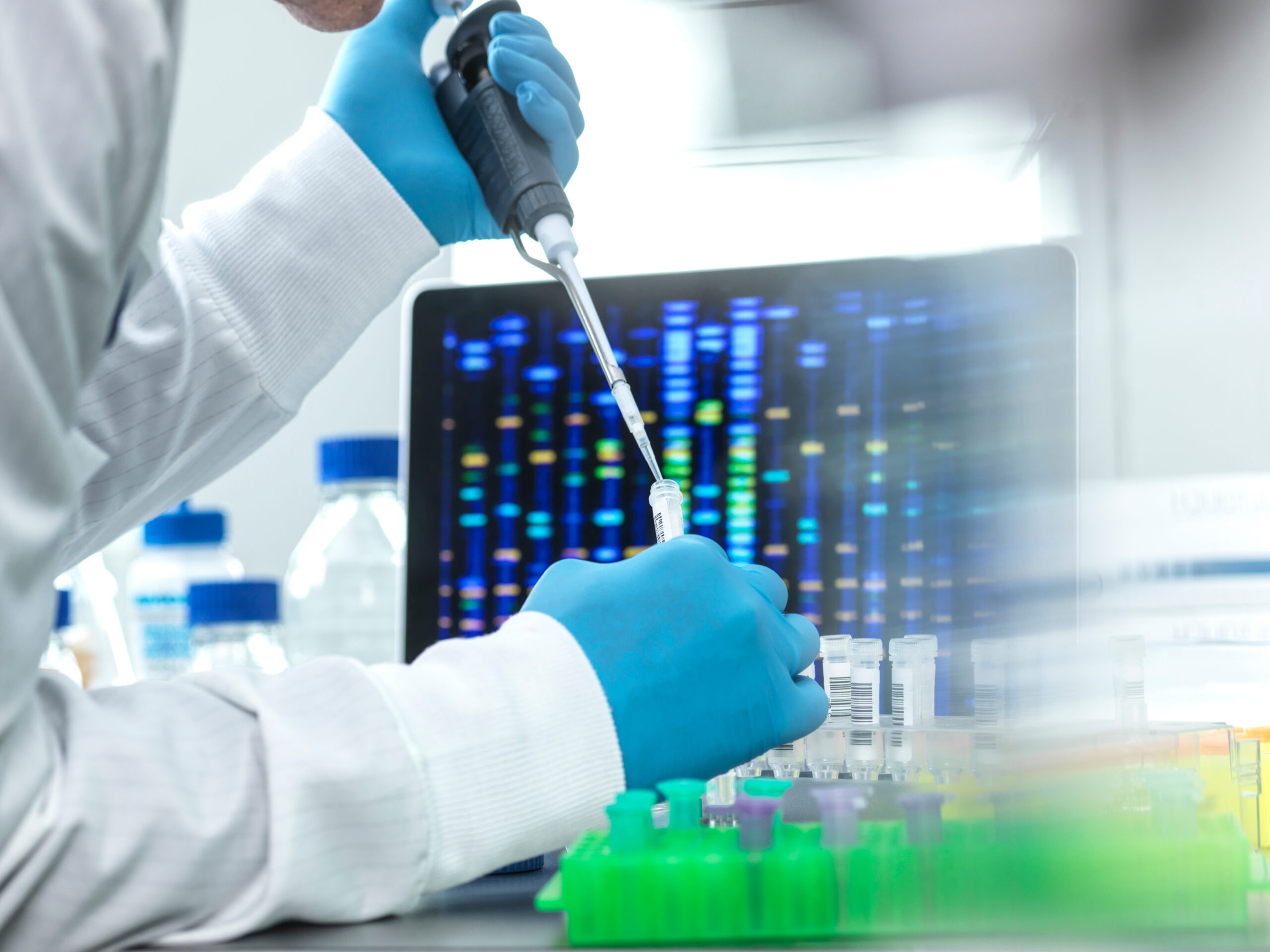
A gene patent is the exclusive rights to a specific sequence of DNA (a gene) given by a government to the individual, organization, or corporation who claims to have first identified the gene. Once granted a gene patent, the holder of the patent dictates how the gene can be used, in both commercial settings, such as clinical genetic testing, and in noncommercial settings, including research, for 20 years from the date of the patent. Gene patents have often resulted in companies having sole ownership of genetic testing for patented genes.
A Brief History of Gene Patent Applications
After it was announced in June 2000 that the human genome was almost completely mapped, private and public entities unleashed a flood of patent requests for genes and small pieces of gene sequences. On June 13, 2013, in the case of the Association for Molecular Pathology v. Myriad Genetics, Inc., the Supreme Court of the United States ruled that human genes cannot be patented in the U.S. because DNA is a “product of nature.” The Court decided that because nothing new is created when discovering a gene, there is no intellectual property to protect, so patents cannot be granted. Prior to this ruling, more than 4,300 human genes were patented. The Supreme Court’s decision invalidated those gene patents, making the genes accessible for research and for commercial genetic testing.
The Case of Myriad Genetics
BRCA1 and BRCA2 are genes (i.e., pieces of DNA) that normally help repair damaged DNA. A mutation in one of these genes means that cells are more likely to develop genetic alterations that can lead to cancer. Someone with mutations in the BRCA1 or BRCA2 genes has a significantly higher risk of getting cancer, especially breast, ovarian, and prostate cancer. According to its court filings, Myriad Genetics was the first company to discover the precise location and sequence of the BRCA1 and BRCA2 genes, which allowed it to determine their typical nucleotide sequence.
After it identified the location and sequence of BRCA1 and BRCA2 genes, Myriad obtained a number of patents. The patents covered the act of isolating the genes and the creation of a type of DNA known as complementary DNA (cDNA), giving Myriad exclusive rights to control those processes for 20 years. Although the actions described in the patents are part of the process of Myriad’s BRCA1/2 testing, it is important to note that Myriad’s patents did not cover any unique testing methods. When scientists at other institutions began offering BRCA testing after Myriad had discovered the genes, Myriad ordered them to stop, asserting that the testing infringed Myriad’s patents. One of the scientists who had been ordered to stop, Dr. Harry Ostrer, sued to declare Myriad’s patents invalid, joined by other doctors, patients, and advocacy groups.
The Supreme Court considered Myriad’s claims under the long-held rule that “laws of nature, natural phenomena, and abstract ideas are not patentable,” they are the tools of innovation necessary for science and technology. Yet, patents serve to encourage creation by ensuring some degree of profitability. The Supreme Court explained, “Patent protection strikes a delicate balance between creating ‘incentives that lead to creation, invention, and discovery’ and impeding ‘the flow of information that might permit, indeed spur, invention.’” Thus, the question before the Court was whether Myriad’s patents pertain to a “new and useful composition of matter” or simply “naturally occurring phenomena.” In a unanimous decision, the Court ruled that cDNA is patentable, while segmented, natural DNA is not.
Patenting Genes
The Supreme Court’s ruling did allow that DNA manipulated in a lab is eligible to be patented because DNA sequences altered by humans are not found in nature. The Court specifically mentioned the ability to patent a type of DNA known as complementary DNA (cDNA). This synthetic DNA is produced from the molecule that serves as the instructions for making proteins (called messenger RNA).
There are two main processes involved in the patenting of genetics:
- Isolation: Once a new gene or genetic mutation has been discovered, it must be isolated and purified from the surrounding genetic material. This is typically done using advanced laboratory techniques such as PCR, gel electrophoresis, and DNA sequencing.
- Patent search: Before filing a patent application, it’s important to conduct a thorough patent search to make sure that no one else has already patented the same gene or genetic mutation. This helps to avoid potential conflicts and legal disputes down the line.
Conclusion
The issue of gene patenting remains controversial, with critics arguing that it can stifle innovation and research, limit access to important medical technologies, and potentially lead to monopolies in certain industries. Others argue that gene patents are an important tool for incentivizing innovation and protecting intellectual property rights, and that they can lead to important advancements in fields like medicine and biotechnology. In order to effectively prepare a genetic patent application, a robust knowledge base and understanding of the genetic landscape is required. That’s where IP.com’s solutions are critical. Our software, analytics and professional services offer a comprehensive view of the fast-changing genetic technology landscape inclusive of patent, non-patent and IP.com-exclusive technical literature such as IEEE. Contact IP.com today to find out how we can help with your research, analysis and reporting needs.


